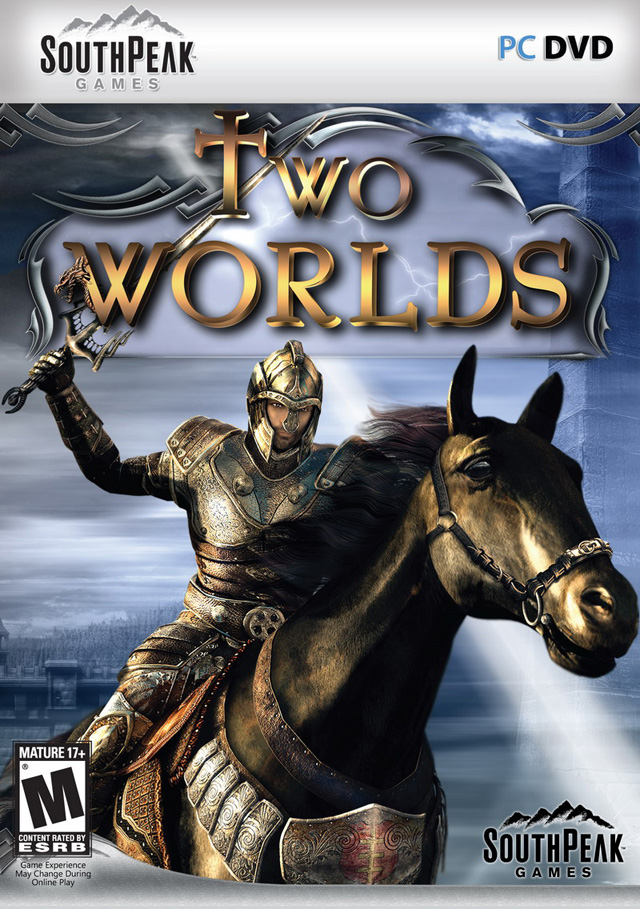Two Worlds Review
-
Category: ReviewsHits: 15773

Article Index
Page 1 of 2
Introduction Usually when I play a role-playing game, the title of the game makes perfect sense. For example, when I played Titan Quest and World of Warcraft, the titles were pretty indicative of what I was going to get, at least thematically. But then there are some games where the title is a head-scratcher. Consider Sacred. When I played that game a couple years ago, I couldn't figure out where the title came from, and I always wondered if the title made sense at some point in the game's development, or if the developer just liked the word and thought it would look good on a game box, sort of like when George Eastman came up with the name Kodak for his new camera (he simply liked the letter (k)).
Add to the latter list the game Two Worlds from developer Reality Pump. As far as I can tell, the title of the game doesn't have anything to do with anything. There aren't two worlds in the game, and the single-player campaign deals with Aziraal, the dead god of war. Some people in the (one) world want to bring him back to life, but you're not with them. You think the (one) world is a better place with him dead. However, a shady group of individuals manages to gain some leverage over you by kidnapping your sister, and they force you to hunt for the five pieces of an ancient relic that can bring the dead god back to life. The campaign then deals with you exploring the (one) world and tracking down the pieces of the relic, before finally confronting the shady group and their evil god. So how do you get Two Worlds from that? I have no idea.
Character Development
Despite Two Worlds not having much in the way of a storyline, in the single-player campaign you're forced to play a human male character whose skill set doesn't match any of the game's 12 official classes (in multiplayer, you can also be a female or an elf, and you have to pick a class). Your character is sort of an (everyman) character, with an assortment of skills for melee combat, ranged combat, and magic. Later, as you visit towns during your travels, you can learn new skills to make your character even more versatile.
Skills include abilities like (strong hand,) which increases the amount of melee damage you do, and (disarming arrow,) which disarms opponents from afar (and which is really a pain when it's done to you). There are also thief skills for sneaking, stealing, and picking locks, and a (riding) skill for riding horses and other mounts. Magic is also considered to be a skill. There are five schools of magic, and as you put more skill points into each school, you're allowed to cast the higher level spells in the school. The damage done by spells isn't controlled by your skill level, though. Instead, the magic system uses (cards,) where the more cards you play, the more damage you do. There are also booster cards that you can use to reduce the mana cost of a spell, increase the duration of a spell, and more.
Each time your character gains a level, you receive five attribute points to spend on your attributes (strength, dexterity, vitality and willpower) and one skill point to spend on your skills. You also get skill points for passing certain thresholds (for example, by killing enough enemies or by picking open enough locks), and some quests reward you with skill points as well. Moreover, there is an alchemy component to the game, where you can brew potions for your character, and it's pretty easy to brew potions that add permanent bonuses to your attributes. As a result, while your character starts out weak (boars in particular killed me easily), by the end of the game you're way more powerful than anything else, and combat is pretty much a joke. When I got to the final boss, I killed him in two hits, and the spell he cast didn't damage me at all.
Mechanics
In Two Worlds you control a single character. The game uses a third person perspective (the camera sits over your shoulder), and you use the WASD keys to move and the mouse to steer. Left clicking the mouse causes you to attack with your weapon, and right clicking the mouse causes you to use a designated special attack or spell. Whenever you reach an interactive item (such as an NPC to talk to or a chest to open), the spacebar is what you use to start the interaction. The control system is pretty standard, but if you don't like the way something works, you can always configure the keys to your liking.
There is a certain amount of dialogue in Two Worlds, but mostly what you do in the game is fight things. Enemies start out as forest creatures, like wolves and boars, but then they eventually progress to orcs and demons and even dragons. Unfortunately, the combat system doesn't work very well. You can't strafe or block, and the (s) key causes you to turn around and walk away rather than walk backwards, and so once you enter into combat (usually against three or more opponents at once) there isn't a lot you can do other than swing away and hope for the best. Worse, developer Reality Pump apparently had no idea what an end-game character might look like, and so the healing potions available in the game aren't nearly powerful enough. My character ended up with 30,000 hit points, but the best healing potion only heals 1000 hit points, and so potions were basically useless in combat.


